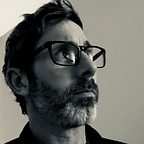10 Tips For Getting Unstuck
Techniques for Product Designers
All these techniques reset your current trajectory and bring you back into your groove. The core principle is to keep the concept moving forward, whatever it takes. Trust you will find your way to an excellent product through iteration and collaboration.
Take a deep breath and get into the flow. Here are some hints:
1. One Step Better
Often when tasked with solving a straightforward problem, designers seize the opportunity to fix everything broken in the experience. Resist this temptation to overachieve. Instead ask yourself, “What is the smallest step I can take to make this better?”
2. Start Anywhere
Which problem are you most motivated to tackle at this moment? It might be a lower level screen, an icon, or something that seems unimportant. But if it engages your inspiration, use it as a catalyst for creativity. You’ll find your way back to the problem at hand.
3. Try Every Idea
Are you overwhelmed with possibilities? Try every idea. Take a few hours and sketch every design you can think of. It takes less time than you expect and helps clear your mind. When finished, ruthlessly cut the ideas that obviously don’t work. Then focus on the best ones. Keep all your sketches in a separate doc. You’ll want to refer to them later.
4. Great is Better than Best
I’ve seen countless designers and engineers get lost and discouraged trying to create the perfect experience. Every great design requires trade-offs. Focus on the core experience for the core audience. It’s your job to choose the best compromises and move forward. If you have doubts, get the product in front of real people. You’ll quickly find out where to focus your attention.
5. Remove the Problem
Feature requirements are malleable. If you find yourself thrashing around without making progress, question your assumptions. Identify the feature standing in your way and remove it. Often everything will immediately fall into place. Maybe the experience is better without that feature. If not, you’ll figure it out later. For now, stay engaged and keep moving forward.
6. Emotional Separation
That one feature you LOVE…kill it. It’s getting in your way. You’ve lost perspective. Being professional requires you to keep emotional distance from your creations. Plus, it will improve your ability to communicate about your work and listen to ideas from others. Design isn’t about creating something you love. It’s about designing experiences your customers love.
7. Give them a Better Idea
Sometimes you see a team struggling — making one mediocre decision after another with dubious reasoning. They are smart people making the best progress possible with the ideas they have. They need better ideas. Broaden their minds with something new. Make it as real as possible. Use animations and prototypes.
8. Don’t Use a Convention in an Unconventional Way
Most of the time, interfaces are a remix of conventional components strung together. Great! The experience is familiar and usable. But, designers like to innovate. Often you will feel compelled to put your unique spin on the tried-and-true. Resist the temptation. You’re going to confuse people. Save your creative energy for something truly original.
9. Pretend You Don’t Have to Do the Work
As a designer, it’s common to become biased when solving design problems. You unconsciously choose a solution within your comfort zone, even if it’s not the right direction. To get through this, pretend you aren’t the one doing the work. Imagine you will have a world-class designer do it for you. For now, your job is only to identify the right direction.
10. Don’t Skip Steps
At the start of a project, idealism peaks and drives you to create the most fantastic product imaginable. You’re ready to make the jump from zero to awesome! And then a few hours into the process, you’re stuck. How did this happen? You’ve been trying to skip steps. Every product you admire sucked at one point. Allow your work to be ugly or wrong as you explore. It’s a normal and healthy process.
